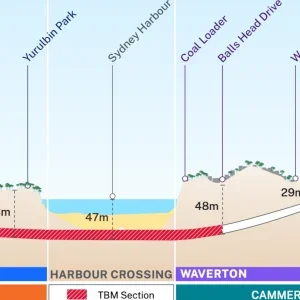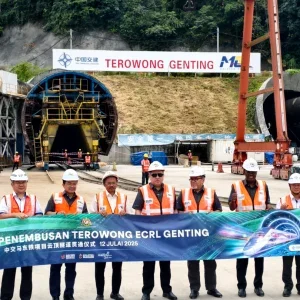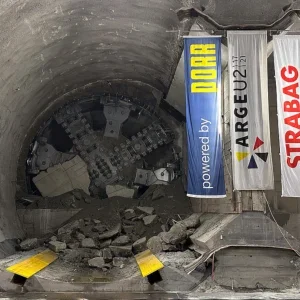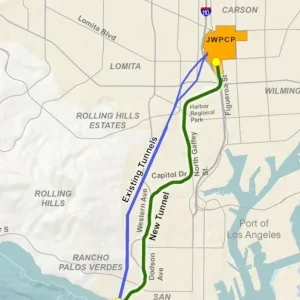Rockbolt failure was suspected as having played a part in the collapse of a 25m long stretch of concrete roof in the southbound bore of the Hanekleiv tunnel, south west of Oslo, Norway, in late December.
While investigations continue into the shallow roof collapse, T&TI learned that discussions among parties involved in the probe were considering whether the rockbolts might have been too short on the stretch of tunnel. The official investigation ordered by the Department of Transport (SD) is expected to report mid-February.
Some 600 tonnes of rock fell onto the southbound tunnel on Christmas evening. No injuries resulted and the few cars on the E18 road close to Sande, south of Drammen, near midnight were able to stop to avoid the rockfall.
Some 200m3 of syenite blocked the two lane tube, with only a few large blocks and the remainder small rocks. The depth of the hole in the roof is relatively shallow, a few meters deep at most, said a spokesman for Statens Vegvesen, the Norwegian Public Roads Administration (NPRA).
He added that engineers had investigated the stability of the rest of the tunnel as well as the parallel, northbound tube the night of the collapse. Investigation of the collapse by SD’s expert group was continuing as contractor Mesta cleared the debris and secured the roof with rockbolts.
The 1.76km bores were built in 1997 by NPRA’s then construction division, which was spun-out in 2003 and now trades as state-owned Mesta, which the government is looking to privatise. Responsibility for the Hanekleiv tunnel, though, continues to rest with NPRA and it is awaiting the experts’ report into the roof failure.
A spokesman for the Norwegian Geotechnical Institute (NGI) told T&TI it was called in by NPRA two years after the tunnel was built to investigate possible strengthening requirements in the northbound tube. The call came after the contractor handling frost isolation and waterproofing works expressed concern to the client, which resulted in extra rockbolts being installed and concrete placed in sections of the north tube, said NGI.







